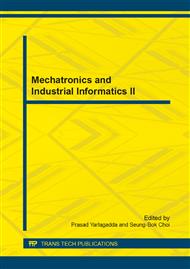p.311
p.316
p.322
p.328
p.333
p.337
p.342
p.346
p.350
An Image De-Noising Algorithm Based on K-SVD and BM3D
Abstract:
The existence of noise affects the quality of the image seriously. The image de-noising algorithm based on KSVD appears fuzzy, where weak texture smooth area also can appear false textures, at the same time, when the noise was very big, the de-noising effect would not always be ideal. This paper proposed an image de-noising method based on K-SVD dictionary and BM3D. The algorithm can solve image weak texture fuzzy problems and weak edges effectively. The experimental results show that, compare with K-SVD de-noising algorithm, this algorithm has a good de-noising ability, which keeping the detail and the edge character of the image better.
Info:
Periodical:
Pages:
333-336
Citation:
Online since:
July 2014
Authors:
Keywords:
Price:
Сopyright:
© 2014 Trans Tech Publications Ltd. All Rights Reserved
Share:
Citation:


